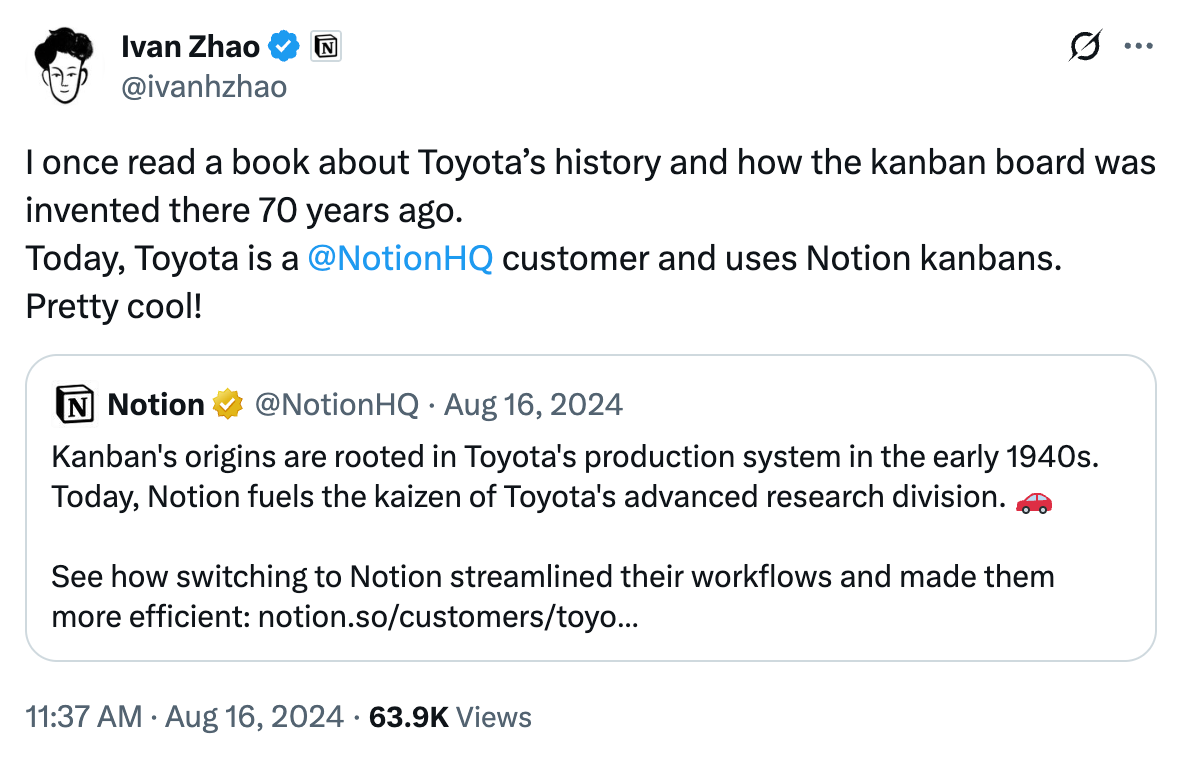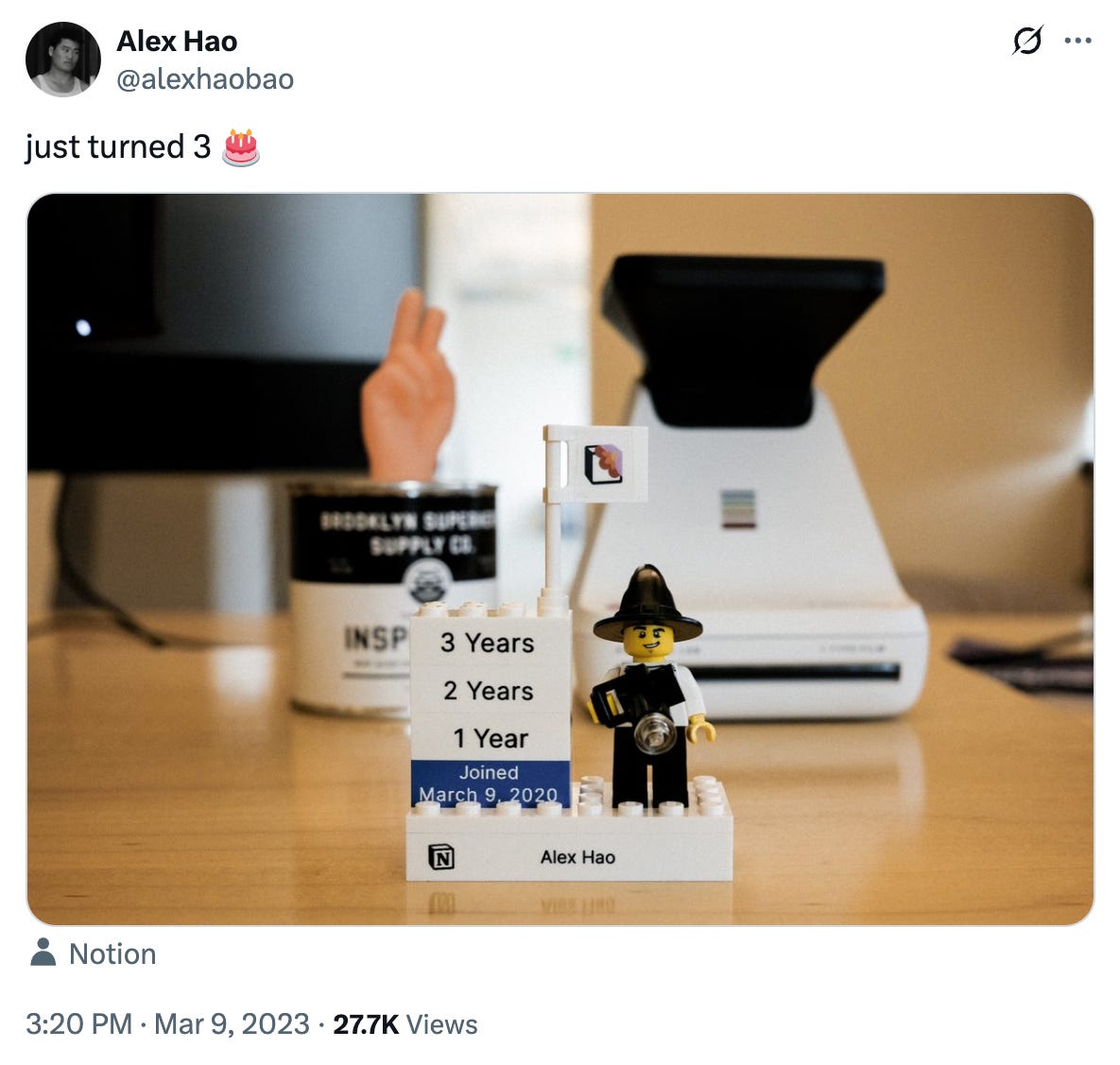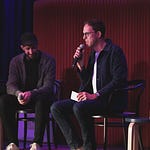Few companies treat design as a true differentiator like Notion does. Even fewer are led by someone like Ivan Zhao, the company’s chief executive officer and designer co-founder whose care of craft runs deep through the product and team. With more than 35 former founders on the team, its culture reflects that same rigor across the board, with an incredibly high bar for design.
You may have heard the story of the company’s early years: rebuilding the product four times, nearly running out of money, and taking five years to see signs of traction. Notion has grown to more than 100 million users, but the questions remain the same. How do you keep a product coherent as it grows? How do you make decisions that hold up over time? What does it mean to build with taste?
Below, we’re recapping Ivan’s fireside chat with Andrew Lee from our Designer Founder Night in San Francisco earlier this year. He shares his Ivanisms: deeply-held ideas that shape how he builds, from his reverence for history, to how he thinks about tradeoffs, to building products with lasting coherence and taste.
Note: Notion is hiring for designers in San Francisco and New York. Great opportunity to hone your skills inside a company that treats design as a first-class discipline.
Are you or someone you know an aspiring Designer Founder? We're always looking for more Designer Founders to feature, fund, or partner with.
1. Keep it dumb
Ivan is deeply skeptical of clever design. He constantly pushes the Notion team to strip things down and focus on what matters most: the golden path, or the main user flow that 80% of people will take.
“Designers spend too much time on edge cases,” he says. “Most of the time, what matters is the dumbest path. Make that great.”
That principle shows up everywhere, from interface decisions to internal debates.
“If someone’s drunk, can they understand it? You care about your design. Your pixels. Your product. But nobody else does. They’re tired. They’re distracted. They’re going to scroll past it.”
The team doesn’t optimize for polish up front. They optimize for exploration. Designers at Notion will copy-paste a UI 20 different ways just to see what falls out. “Eventually, the right answer becomes obvious.”
His favorite metaphor: the Chinese buffet. You don’t get attached to any one dish. You put a lot out there, let people try, and trust that the best thing will stand out.
2. Build systems, not a suite of features
If you’ve spent time in Notion you’ve probably noticed the LEGO metaphor everywhere. Content within the platform is made up of “blocks.” Employees mark anniversaries by adding a new block to their stack. Their first conference was called Block by Block.
It’s no surprise, because Ivan sees Notion like a LEGO set. Instead of a stack of features, it acts as a system. The building blocks inside the platform include elements like text primitives, database tables, images, callouts, and embedded files. They’re intentionally designed to be modular and moveable so a database can live inside a page, which can live inside a list, and so on.
“When you add a new LEGO brick, it might pollute the whole thing,” he says. “So you have to think system-first.”
The team is building across a lot of product areas—docs, tasks, databases, calendar, and email. Each one has to make sense on its own, but also work together as part of a larger system. That does, of course, make every decision a little riskier as a small change in one part can easily throw off the rest.
This is why Ivan spends so much time balancing tradeoffs. Not just inside the product, but across the org. APIs, incentives, system constraints. “It’s especially tricky because we’re not trying to build just one product.”
3. Company building = constantly making tradeoffs
For Ivan, being a founder is a lot like being a good designer. Both require making the best possible choices within constraints.
“Starting a business, solving a design problem, or a technical problem…they’re all the same. You’re making tradeoffs.”
Early on, Ivan and his co-founder, Simon Last, repeatedly scrapped entire product versions when complexity overwhelmed users. "Don't be afraid to start over," Ivan has said, reflecting on how progress came only after they radically simplified. Ivan found guidance in Notes on the Synthesis of Form, a 1964 book by architect Christopher Alexander, who argues that good design is about systematically mapping out problems, understanding the materials you have available, and making the best compromise within existing constraints.
Ivan sees that same logic everywhere: A designer choosing between text and icon in a 200-pixel-wide component. A founder deciding between a bottoms-up or top-down go-to-market. A PM evaluating Python libraries. “The shapes are very similar,” he says. “You’re working with constraints. You’re trying to let something live.”
This mindset has shaped Notion’s culture. From its early days, the team stayed intentionally small—even reaching unicorn status while the team was still only a dozen people—so decisions were quick and everyone stayed close to the product’s core vision.
For founders and designers, it’s worth regularly asking: What are my real constraints? What am I willing to sacrifice to make this simpler? Is this feature or decision truly serving users, or just adding noise?
4. History is your hidden advantage
Ivan points out how little the tech industry studies its past.
“If you study physics, you know who Newton is. But in tech? Most people don’t know who Engelbart is.”
Douglas Engelbart invented the computer mouse, but his deeper contribution was a radical vision: computers should augment human intellect. He saw software as a flexible medium that helped people think better, not just work faster. Ivan has called Engelbart Notion's “patron saint”, revealing how deeply this philosophy shapes both product and culture.
This vision permeates Notion's design. The block structure reflects Engelbart's belief that users should construct their own tools, not fill out templates. The product's modularity stems from his idea that software should adapt to human thinking, rather than forcing thinking to adapt to software.

Ivan draws from other historical wells too: Alan Kay's dynamic media, early-20th-century architecture, mid-century furniture design. Walk through Notion's office and you'll see design books beside engineering texts, Eames chairs beside whiteboards—reminders that history holds forgotten solutions.
His counter-move: borrow widely and look sideways. Study architecture from 1900 to 1920. Examine mid-century furniture principles. Learn from computing pioneers who saw software as a medium, not a tool.

5. Taste and agency are what remain
The words “taste” and “agency” seem to come up in half the conversations about AI and creativity these days. They risk sounding like empty placeholders, but Ivan offers a clearer breakdown in which he sees product and company building as shaped by three forces: capability, agency, and taste.
Capability is your raw skill. AI is already supporting a lot of this through designing screens, writing copy, generating code.
Agency is your ability to push through. “To start a company, you better be able to hustle. Just push through stuff.”
Taste is what determines which direction you push. “It’s whatever draws your inspiration. But don’t just look in front of you like tech people do. Look sideways. Look into the past.”
It turns out, good taste isn't as subjective as we assume. The best tastemakers are pattern recognition machines who've absorbed vast cultural knowledge to predict what discerning audiences will value—something AI systems could eventually replicate.
But as Ivan and Julie Zhuo discussed in their conversation, the highest form of taste goes beyond prediction to movement making. The most significant tastemakers take social risks, championing unfamiliar work and convincing others of entirely new ways of seeing greatness.
Taste is refined the same way a palate is. You start with red vs. white wine. Over time, you start distinguishing Chardonnay from Albariño. Early Bauhaus from late Art Nouveau. Features that feel “fine” from those that resonate emotionally.
But how do you actually develop taste in software?
Start by treating software not just as a user, but as a critic. Ask: What about this feels good? What breaks the flow? How does it handle complexity or edge cases? Follow the work of designers and product teams you admire.
Most importantly, build things. Side projects offer irreplaceable firsthand experience with tradeoffs, friction points, and quality standards. Even small projects teach you to recognize “good.”
6. Design should show up everywhere
Ivan toured over 20 buildings before landing on Notion’s new office, a 1907 post-earthquake structure in downtown SF. “We liked this one because it had some sense of history. Most offices are just glass boxes.”
When I visited, I could see why he chose it. The interior feels more like a craftsman home with wood-paneled walls, warm indirect lighting, and carefully chosen textures. No steel sheet to be seen.
And then there’s the green rule.
“We don’t allow green furniture,” Ivan says. Not because he hates the color, but because it doesn’t mix well with other tones. “You can’t control where people move things around. But if you cut green from the palette entirely, everything still looks okay.” This means no green plants, either.
Strict, maybe, but it reflects the same logic behind Notion’s product: reduce interference, preserve harmony, and let the system scale without falling apart.
To close, here’s Ivan’s encouragement to designers:
Where to find Ivan:
LinkedIn: https://www.linkedin.com/in/ivanhzhao
Notion: https://ivanhzhao.notion.site
Brian Lovin on why designers need to be less “nice” as founders
If you enjoyed Ivan Zhao’s take, be sure to check out our previous recap featuring Brian Lovin from the same Designer Founder Night—two different vantage points on what it means to build, lead, and rethink design in tech. He learned the hard way that “just build the best product” isn’t enough. Stepping fully into the founder role meant doing the things outside product and design—like sales calls, cold outreach, hiring (and firing), and marketing.










